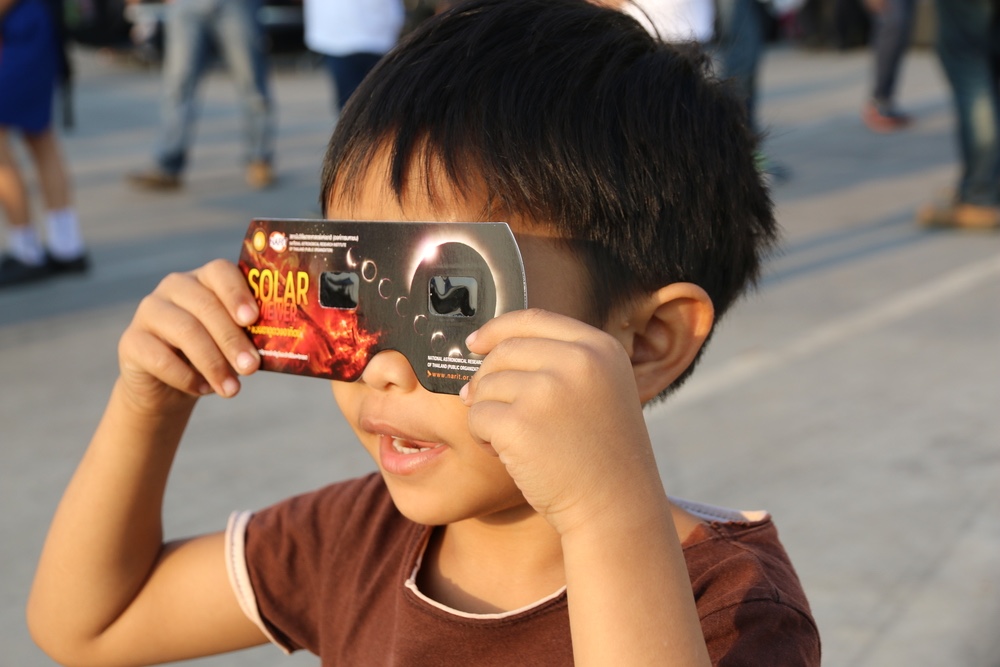
On Aug. 21, 2017, the sun will disappear behind the moon in parts of the United States in an event that many are calling "the Great American Solar Eclipse."
Astronomy lovers across the United States will take out their telescopes and don specialized eclipse viewers to enjoy the rare phenomenon, without worrying about the eclipse making them blind. But what's so special about these so-called solar eclipse viewers, and how are they different from regular sunglasses?
To start, eclipse viewers filter out much more light than ordinary sunglasses, which is necessary to prevent eye damage, said B. Ralph Chou, a professor emeritus of optometry at the University of Waterloo in Ontario, Canada. [10 Solar Eclipses That Changed Science]
That's in part because of the specialized requirements of each type of eyewear, he added.
Color blindness
One of the key differences between sunglasses and eclipse viewers is the amount of light the two types of equipment filter. Sunglasses are typically designed to reduce the amount of light that reaches the eye by between 30 and 80 percent, according to Chou. However, sunglasses cannot filter so much light that they alter color perception, or they could inhibit tasks like driving, Chou said.
Certain types of sunglass tints could preferentially reduce light from certain parts of the visible spectrum, effectively making someone color blind (meaning a red stoplight and a green light could look the same). To ensure that sunglasses do not cause color blindness, they simply don't filter out much light.
Even specialized mountaineering sunglasses, which are designed to block the increased levels of ultraviolet radiation found at higher altitudes and the extra intensity that comes from sunshine reflecting off the snow, block only between 95 and 99 percent of light, he added.
Get the world’s most fascinating discoveries delivered straight to your inbox.
By contrast, eclipse viewers reduce the visible light by a factor of about 250,000.
"You are looking at the sun with only about 0.0003 percent of the light being transmitted through the filter," Chou told Live Science.
Special filtering
To accomplish this task, eclipse viewers use a few different techniques. All use a base of a resin, or plastic-type material. Some filter out the light using tiny carbon particles mixed into the resin. The black carbon blocks most of the light. Other viewers use a plastic or resin lens material, but the lenses are coated with an ultrathin metal layer, which reflects most of the light and creates a dense, optically uniform filter, Chou said. The exact techniques used are proprietary secrets that may differ depending on the manufacturer, he added.
Those basic filters are often mounted into cardboard frames or put into plastic mounting so they can serve as telescope or camera filters. In theory, people can make their own eclipse viewers with the filtered lenses, or with a shoebox, some tinfoil, a needle and some tape, Live Science previously reported.
But practically speaking, it doesn't make much sense to do that, because commercially available viewers are safe, cheap and reliable, Chou said.
"Considering that eclipse viewers are only a few dollars each, it's really not worth the time or effort to make your own," Chou said. "Another consideration is that you have to make sure the filter material is securely mounted so it isn't blown out of the mounting by a strong breeze."
Originally published on Live Science.

Tia is the managing editor and was previously a senior writer for Live Science. Her work has appeared in Scientific American, Wired.com and other outlets. She holds a master's degree in bioengineering from the University of Washington, a graduate certificate in science writing from UC Santa Cruz and a bachelor's degree in mechanical engineering from the University of Texas at Austin. Tia was part of a team at the Milwaukee Journal Sentinel that published the Empty Cradles series on preterm births, which won multiple awards, including the 2012 Casey Medal for Meritorious Journalism.
